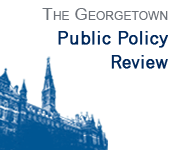by Adrian Ineichen
Economic Growth
While many major countries have suffered economic contraction or stagnation in 2009, China is expected to grow by about 8.2% in 2009. On the one hand, a massive stimulus package of approximately 4 trillion renminbi (RMB; about US$ 585bn) seems to have supported growth. Fiscal expansion has boosted infrastructure spending on airports, railways, bridges, environmental infrastructure and low-cost housing. This spending will contribute to a record budget deficit of 3.8% in 2009 (comparably, the US federal budget deficit for 2009 up to date is at about US$ 1.4tr, which is more than 66% of projected revenues, according to CBO estimates as of November).
On the other hand, Chinese bank lending has contributed to support economic activity. For the period January to October, total bank lending has accumulated to RMB 8.92tr in 2009 while the same period in 2008 saw lending at RMB 3.66tr – an increase by the factor 2.43. Overall lending for the whole year 2009 may well hit the 9.5tr level which would approximately equal the US federal deficit in dollar terms.
Chinese Banking
Such gigantic figures raise the questions about how sustainable and well-targeted such lending is. Recent steps point towards a tightening of the lending boom. The China Banking Regulatory Commission (CBRC) has warned about the build-up of risks in the banking sector. Concerns have arisen that some of the new money is flowing into equity markets and real estate speculation.
So far, the ratio of non-performing loans (NPL) across the banking sector is low at 1.7%. The state-owned banks, particularly the top-five which have been used in the past by the government to direct credit, have relatively higher figures than some privately owned banks. Chinese banks may need to raise more capital in order to strengthen their balance sheets. Further, the People’s Bank of China is expected to tighten monetary policy and, among others, raise reserve requirements.
It will be interesting to watch how policies will balance between growth targets (and thus new lending and investments) and financial stability (and thus maintaining capital adequacy and prudent risk management). In any case, historical experience suggests that if NPLs are rising again, this may be hidden for some time and in the end the government may step in to clean up (as in the early 2000s). Such a wait-and-see approach is not only very costly, but also lengthy and it takes years to be effective (for example as late as August 2008, the Economist Intelligence Unit estimated the NPL ratio of one of the top-five state-owned Chinese banks to be at more than 23%). Damage to the banking sector could be long-lasting.
A Brighter Spot?
One of the brighter dots on the Chinese banking scene is the China Minsheng Banking Corporation (CMBC). Minsheng’s NPL with less than 1% is about half of the average. Last week, it raised US$ 3.86bn by listing on the HK stock exchange. With this step, CMBC’s tier 1 capital ratio increases to 8.65% (from 5.90%). While the Basel standard for tier 1 is 4%, many Western banks have strengthened their sometimes heavily damaged balance sheets since the current crisis broke out; the Swiss bank Credit Suisse has currently a tier 1 capital ratio of 16.4%, while Citi’s it at 12.7% and the British HSBC has 10.3%.
Even though the share offer appears to have been modestly priced and the retail part was 154 times oversubscribed, the shares took a hit on their first trading day in Hong Kong. This could hint at some market uncertainty about the soundness of Chinese banks, although CMBC looks comparably well-off. How will the market react when other Chinese banks raise their capital? Some others say Minsheng’s profitability is relatively weak which could explain the less-than-enthusiastic response to the listing.
Minsheng’s bid to take over a Californian bank, the United Commercial Bank (UCB) was deplorably thwarted in November 2009 by FDIC’s intervention to save the bankrupt UCB. The Federal Reserve could not grant approval to the Minsheng take-over of UCB as its home regulator, the CBRC, does not yet meet American standards for “consolidated supervision.” While such requirements may seem plausible (if they are too weak, a worst case scenario would be that many badly regulated and managed foreign banks could own American banks and engage in excessive risk-taking and undermine US financial stability), the Minsheng case is unfortunate as it involved one of the better Chinese banks willing to avoid the bankruptcy of a US bank. The FDIC intervention comes at an aggregated cost of US$ 1.4tr plus 300m lost TARP funds. Minsheng loses its 10% stake it had already in UCB.
Epilogue
It appears that the FDIC and the Fed should improve their coordination among themselves and with foreign regulators to avoid such cases which cause anger abroad and at home and lead to higher taxpayer’s costs. While prudential regulations are important, they should not spur domestic protectionism. Entry of foreign financial institutions in the US, but also in China and elsewhere can spur competition and market discipline and thus should be welcomed. I hope that regulators can work together to reduce barriers for foreign entry, streamline regulations and make them more transparent. A bi- (or: multi-?) lateral investment treaty would be a step in the right direction.
Suggested Links
About Minsheng Bank’s Hong Kong Listing:
http://online.wsj.com/article/SB10001424052748704204304574544791937541848.html
The Economist about Minsheng:
http://www.economist.com/businessfinance/displaystory.cfm?story_id=14859281
UCB Failure and the Non-take-over:
http://www.ft.com/cms/s/0/245e6872-d542-11de-81ee-00144feabdc0.html?catid=5&SID=google
Recent figure on the US budget deficit:
http://www.foxnews.com/politics/2009/10/07/budget-deficit-hit-record-trillion/
http://www.cbo.gov/ftpdocs/105xx/doc10521/budgetprojections.pdf
http://www.cbo.gov/ftpdocs/107xx/doc10708/11-9-09MBR.pdf
About Chinese lending:
http://www.thechinaperspective.com/articles/china039snovemberloansmaytotal150200bindustrialbank6654/index.html
http://www.ft.com/cms/s/0/9267cf6a-b8ec-11de-98ee-00144feab49a.html
http://in.reuters.com/article/businessNews/idINIndia-43769120091107
EIU Country Report China December 2009
Established in 1995, the Georgetown Public Policy Review is the McCourt School of Public Policy’s nonpartisan, graduate student-run publication. Our mission is to provide an outlet for innovative new thinkers and established policymakers to offer perspectives on the politics and policies that shape our nation and our world.
